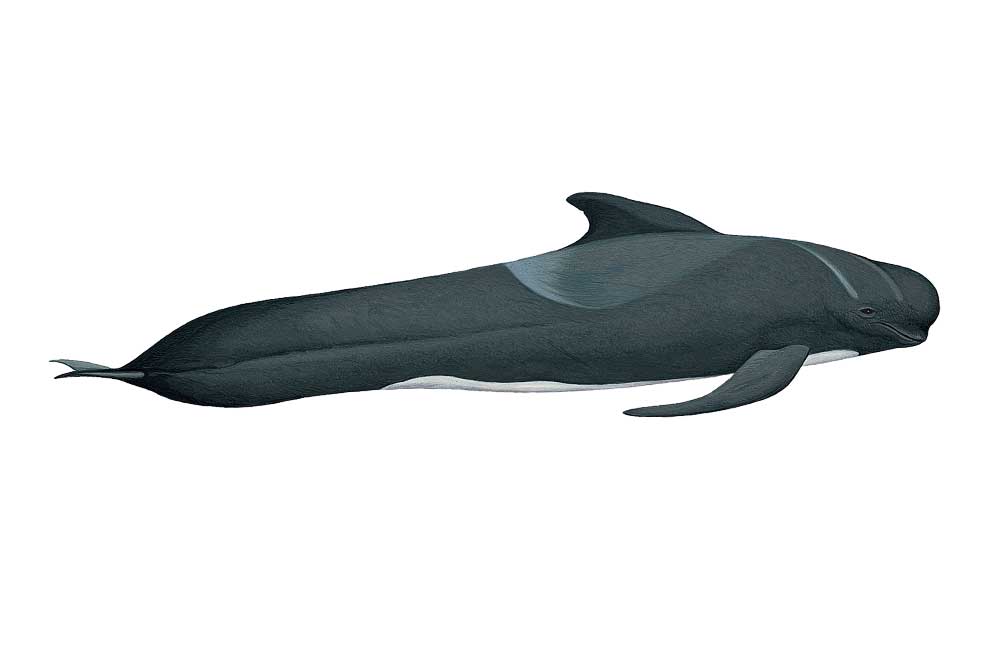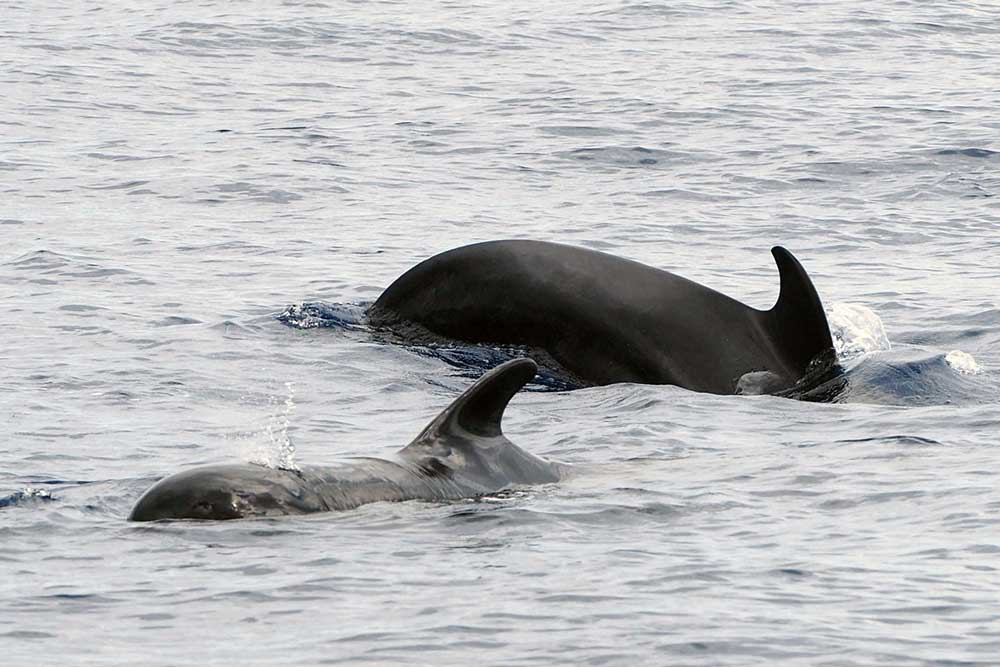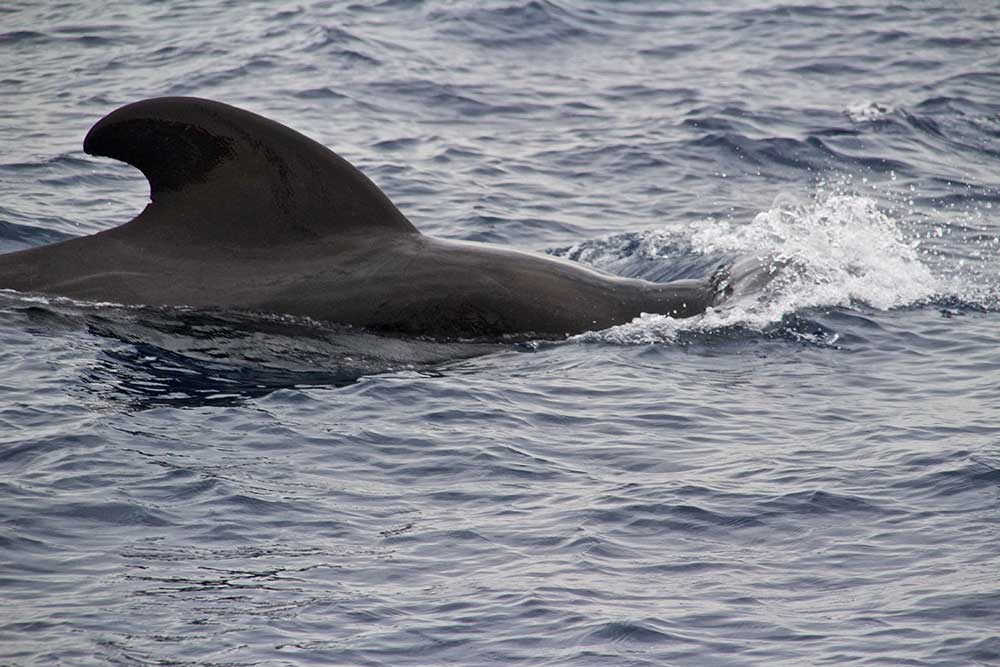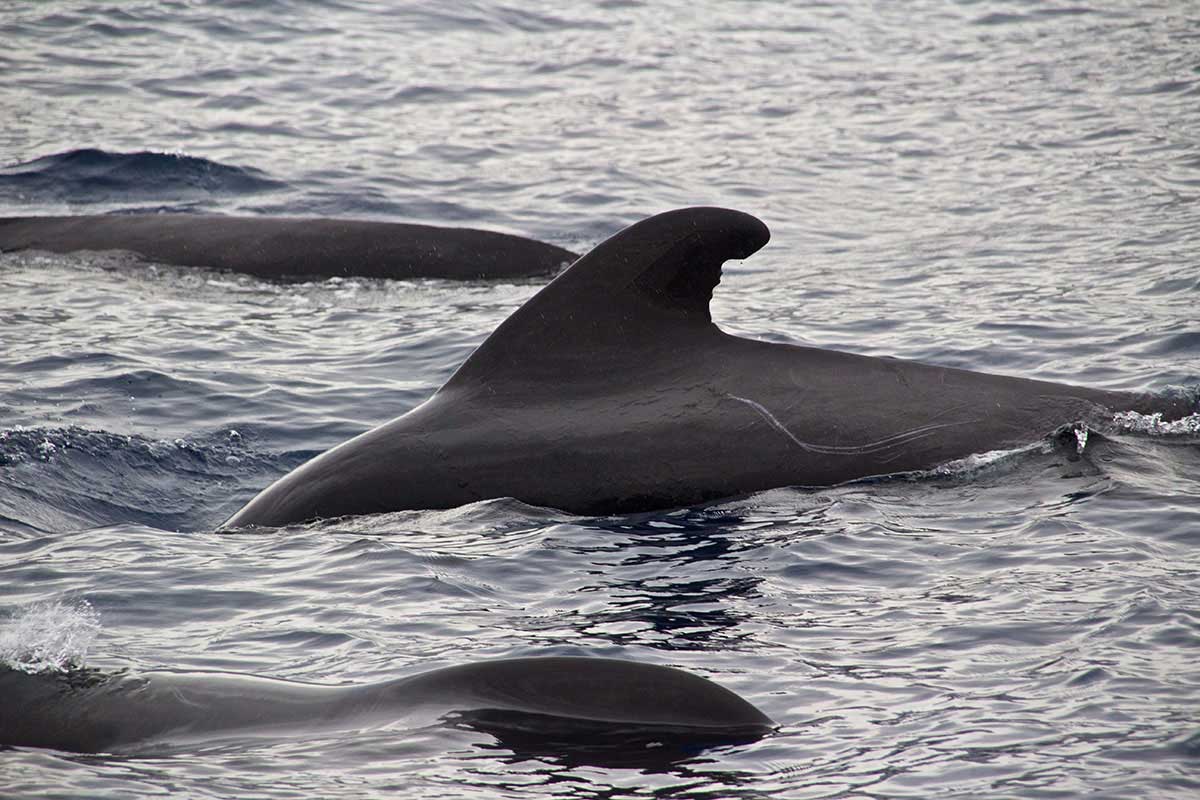
Latin: Globicephala melas
Gaelic: Muc-mhara chinn mhoir
CETACEAN FACTFILE:
Months: January – December
Length: Up to 6.5 metres
Range: Cold sub-Antarctic waters and temperate north Atlantic Ocean
Threats: Entanglement in fishing gear, pollution, hunting
Diet: Mainly squid and fish
PHYSICAL DESCRIPTION
Long-finned pilot whales have a large, bulbous forehead and a long, robust body, which can measure up to 6.5 metres in length. They are mostly black or dark grey, usually with a lighter coloured eye stripe, saddle-patch behind the dorsal fin and a light grey anchor-shaped ventral marking. The prominent dorsal fin is wide at the base and curved. This species of pilot whale has very long, tapered pectoral fins that can measure about a quarter of the body length. Males are usually larger than females and they commonly have a more hooked dorsal fin and the melon may overhang the short beak.
BEHAVIOUR
Long-finned pilot whales are highly social animals that have been recorded in groups of just a few animals to aggregations of over 1000 individuals. In the Hebrides groups of up to 20 individuals have been recorded. Pilot whales are well known for their mass stranding behaviour, and in 1992 eleven animals stranded on the Isle of Lewis. Long-finned pilot whales occasionally bow ride, tail slap and spy-hop (raise the head vertically out of the water) although they are often encountered resting motionless at the surface, which is known as logging.
HABITAT AND DISTRIBUTION
There are two separate sub-species of long-finned pilot whales: in the Southern hemisphere they occupy a circumpolar distribution in cold sub-Antarctic waters; in the Northern hemisphere their range is restricted to the north Atlantic Ocean, the North Sea and the western Mediterranean, from the Azores to Greenland. They favour deep waters, although their seasonal movements may reflect prey distribution. Sightings in the Hebrides are widely distributed, and the long-finned pilot whale is also the most commonly stranded species here.
FOOD AND FORAGING
Diving to depths of between 30 to 500 metres, pilot whales hunt for squid and fish (mainly mackerel and cod around the UK) but may also feed on other species of fish, small octopus and shrimp.
STATUS AND CONSERVATION
Long-finned pilot whales were historically targeted by whalers and the population in the eastern North Atlantic was estimated at over 700,000 animals in the late 1980’s. Fisheries, particularly those for squid, may affect prey availability for pilot whales. In addition, pilot whales can become entangled in fishing gear. Drive hunts, where pilot whales are herded onto the shore, still take place in the Faroe Islands and take over 1,500 whales each season. The use of underwater sonar for military purposes and oil and gas exploration may interfere with pilot whale vocalisations.





